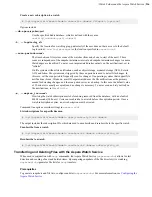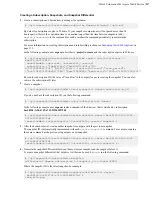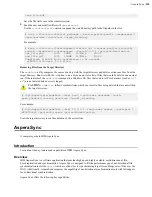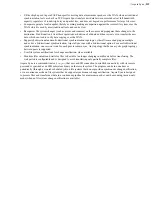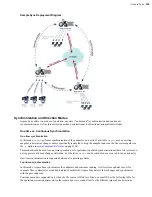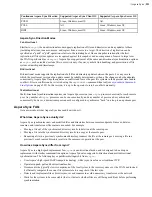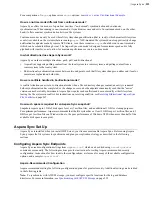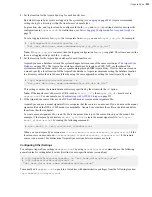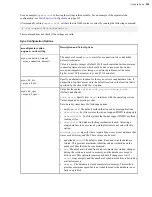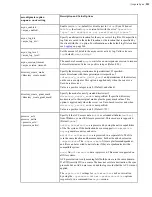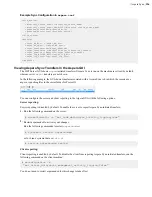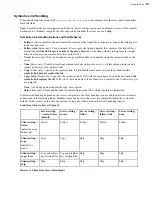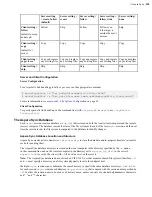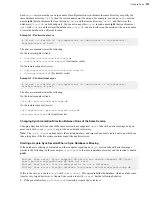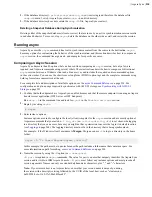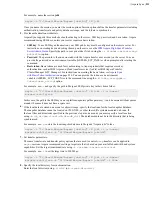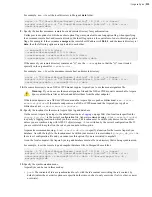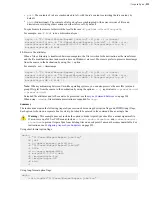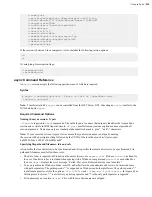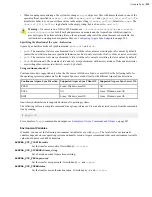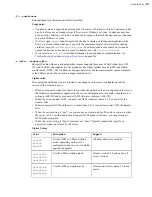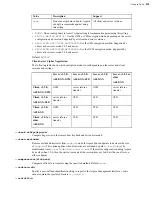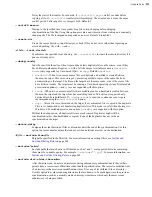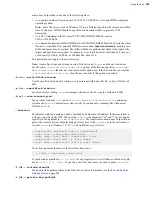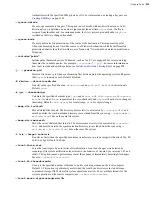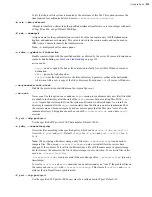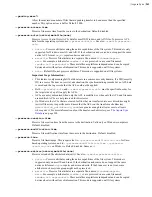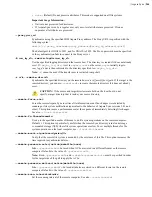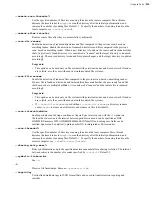
| Aspera Sync |
230
2.
If the database directory (
.private-asp/
session_name
) is missing (and, therefore, the database file
snap.db
doesn’t exist), Aspera Sync creates
snap.db
and its directory.
3.
If the database directory does not contain the
snap.db
file, Aspera Sync creates it.
Deleting a Snapshot Database During Synchronization
Deleting either of the snapshot databases (client or server) that are in use by an active synchronization session results
in undefined behavior. To recover, stop
async
, delete the database on the other side as well, and restart the session.
Running async
Aspera Sync uses the
async
command line tool to synchronize content from the source to the destination.
async
has many options for customizing the behavior of the synchronization, and this section describes how to compose an
async
session, the command line arguments, and examples for specific use cases.
Composing an Async Session
Aspera Sync has more than 80 options that can be used when composing an
async
session, but only a few are
required, and Aspera recommends using several others. These instructions describe how to compose a bidirectional
async
session between a Windows client and a Linux server, and includes the required and recommended options
in the correct order. You can use the short form or long form (POSIX) option tags and the complete commands using
both tag formats are summarized at the end.
For a complete list and descriptions of available options, see the
on page 234. For
configuration and option usage required to synchronize with AWS S3 storage, see
on page 253.
1.
Confirm that both endpoints have Aspera Sync-enabled licenses and that the remote endpoint is running an Aspera
transfer server application (HST Server or HST Endpoint).
Run
ascp -A
in the command line and look for
sync2
in the
Enabled settings
section.
2.
Begin by invoking
async
.
# async
3.
Enter instance options.
Instance options are used to configure the local (client) computer for the
async
session and are mostly optional.
Aspera recommends that you include
-L
log_dir
(or
--alt-logdir=
log_dir
) to set client-side logging
to a directory that you can access, because you might not have permission to access the log in its default location
(see
on page 264). The logging directory must not be in the directory that is being synchronized.
For example, if the Windows client's username is
Morgan
, Morgan can use
-L
to log to a directory in the home
folder:
async -L "C:\Users\Morgan\Aspera jobs\log"
In this example, the path must be in quotes because the path includes a folder name that contains a space. For
more information on path formatting, see
on page 234.
4.
Name the session by using the
-N
option (or
--name=
pair
).
-N
pair
is required in
async
commands. The value for
pair
is a name that uniquely identifies the Aspera Sync
session and is visible in IBM Aspera Console.
-N
pair
must follow any instance options and must precede all
session arguments. Names can only use standard alphanumeric characters, plus "_" and "-" characters.
Note:
If your remote host is an Aspera cluster, ensure that your session name is unique by naming
the session with a descriptive string followed by the UUID of the local host, such as "cluster-sync-
ba209999-0c6c-11d2-97cf-00c04f8eea45".

